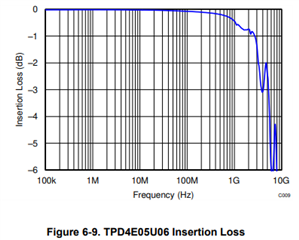Other Parts Discussed in Thread: TPD4E02B04, , TPD1E05U06
Hello,
Would the TPD4E05U06DQAR be able to be used with 8.1GBPS? Do we have any test data to help with this? The datasheet mentions an upper limit of 6GBPS and we have lots of eye diagrams at this data rate.
Thanks,
John


